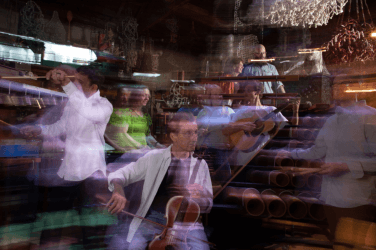
Johannes Brahms

Franz Liszt
Sometimes they went beyond using folk music and used existing pieces by other composers too. The Allegro molto vivace section of Pablo de Sarasate’s Zigeunerweisen (Gyspy Airs) can be heard in Liszt’s Hungarian Rhapsody No. 13 and the melody from Mark Rózsavölgyi’s Víg szeszély csárdás is used by Liszt in his Hungarian Rhapsody No. 8.

Budapest, Hungary
One of the most famous melodies from the Brahms Hungarian Dances is the melody from Hungarian Dance No. 5. When Brahms came across this melody, he mistook it as a piece of folk music and used it verbatim. Unfortunately, it’s actually an original composition by Hungarian composer Béla Kéler titled Bártfai Emlék Csárdás and Brahms inadvertently plagiarized it! As the saying goes, “good artists borrow, and great artists steal,” and it looks like Brahms stole one this time.







